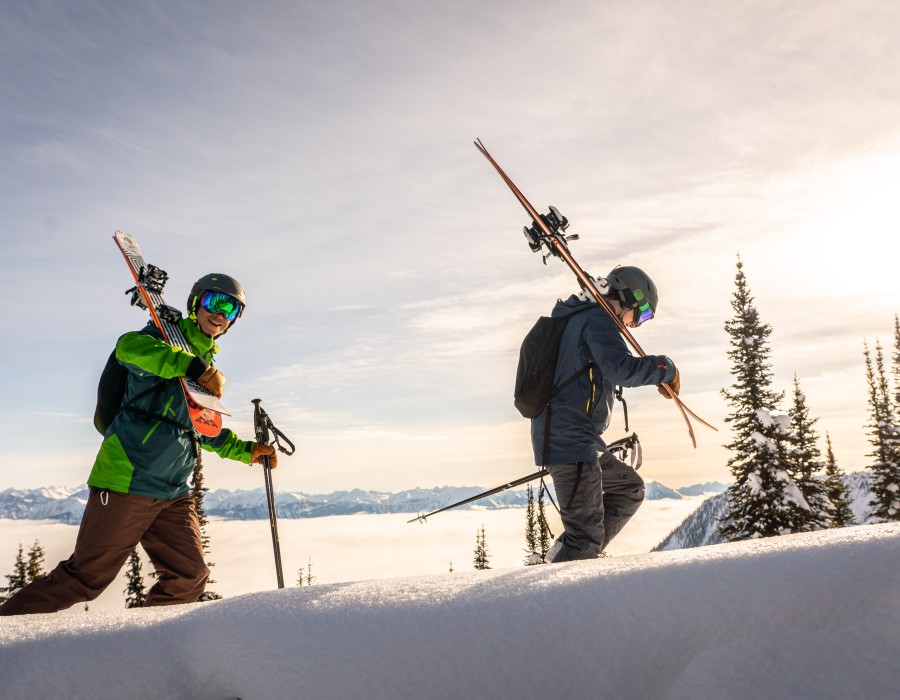There’s nothing quite like the feeling of skiing pow. For those unfamiliar, "pow" is short for powder—those fluffy, fresh layers of snow that create the ultimate skiing experience. If you're new to skiing or just want to know more about why everyone raves about powder days, you’re in for a treat.
What is Skiing Pow?
Skiing pow refers to skiing on freshly fallen, light, and dry snow that hasn’t been packed down. Unlike groomed trails, which are flattened and smooth, powder offers a soft, pillowy surface. It’s a skier’s dream come true—providing a sensation that feels like you’re floating as you carve your way down the mountain.
Why Skiing Powder is So Special
There are a few reasons why skiers eagerly wait for those “powder days”:
- The Floating Feeling: One of the best parts of skiing in powder is the unique feeling of weightlessness. As you glide through fresh snow, your skis cut through the powder, making you feel like you’re almost flying. It’s a completely different experience from skiing on packed snow or ice.
- Challenge and Skill Development: Skiing pow requires a different technique than skiing on groomed trails. You need to keep a more centered stance, adjust your speed, and use more of your body to steer. While it can be more challenging, it’s also incredibly rewarding as you improve your skills.
- Pure Serenity: There's something peaceful about being out on a powder day. With fresh snow often comes quietness—muffled sounds and the beauty of the untouched landscape. It’s just you, the mountain, and the snow.
- Less Impact on Joints: Powder snow provides a cushiony surface, reducing the impact on your knees and joints. This makes it easier to take on jumps, bumps, and steeper slopes without the usual wear and tear.
Tips for Skiing in Powder
While skiing pow is an amazing experience, it does take some practice. Here are a few tips to help you make the most of it:
- Stay Centered: Unlike groomed slopes where you lean forward more, powder skiing requires a more centered position to stay balanced. Try to keep your weight evenly distributed between both skis.
- Keep Your Speed: Powder snow can slow you down quickly, so maintaining your speed is essential. If you go too slow, you risk sinking into the snow, making it harder to maneuver.
- Use Your Body: In powder, you rely more on your whole body to make turns, rather than just your edges. Feel the snow with your legs and use your hips and torso to guide you.
- Go Wide: If you have the option, use wider skis for powder days. Wider skis offer more surface area, helping you stay on top of the snow rather than sinking into it.
The Best Time to Ski Pow
The best powder conditions usually happen after a fresh snowfall—especially overnight when the snow has had time to accumulate. Early in the morning or just after the snowstorm are prime times to hit the slopes. Keep an eye on weather reports, and be ready to head to the mountain when powder is in the forecast.
Where to Find Great Powder
Some of the best skiing pow experiences can be found in areas known for their heavy snowfall and fluffy powder. Popular destinations for powder skiing include:
- Jackson Hole, Wyoming: Known for deep powder and steep slopes.
- Whistler, British Columbia: Famous for its vast terrain and fresh snowfalls.
- Niseko, Japan: Offers some of the lightest and fluffiest powder in the world.
- Alta, Utah: A skier’s paradise, renowned for its abundant powder.
Conclusion: Why Skiing Pow is a Must-Try
Skiing pow is more than just a sport—it’s an experience. From the exhilarating sense of floating on snow to the sheer joy of carving through fresh powder, it’s a thrill that every skier should try at least once. If you haven’t yet had the chance to ski on a powder day, keep an eye out for the forecast, grab your gear, and get ready for an unforgettable adventure on the slopes.





Comments